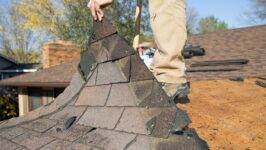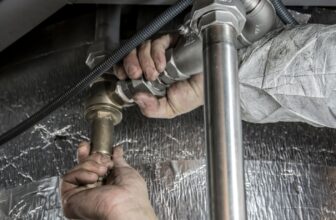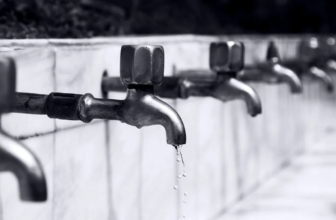
What to Expect During an Old Roof Replacement

Replacing an old roof is a significant home improvement project that requires proper planning and understanding. It protects your home from the elements, increases its value, and improves energy efficiency.
This article provides homeowners with a detailed look at what to expect during the process of old roof replacement.
Initial Inspection
The initial inspection is a critical first step in the roof replacement process, especially in commercial real estate. A professional roofer will assess the current state of your roof to determine the extent of wear and damage. This involves checking for leaks, examining the condition of roofing materials, and identifying any structural issues.
The findings from this inspection will guide the rest of the replacement project, ensuring that your commercial property remains protected and functional.
Choosing Materials
When it comes to choosing materials for your new roof, there are several options available. Asphalt shingles are popular for their affordability and variety of styles. Metal roofing, while more expensive, offers durability and energy efficiency benefits.
For those looking for an eco-friendly option, solar tiles can generate electricity, though they come at a higher cost. The choice of material should reflect your budget, the climate of your area, and the aesthetic you desire for your home. A professional roofer can help guide you through the options to find the best fit for your property.
Preparation
Getting your house ready for a new roof is super important and not too hard. Think about moving your cars away from the driveway so they don’t get dirty or property damage. Also, take down pictures or shelves on the walls inside your house because the banging on the roof can make them fall.
Don’t forget to cut the grass short. This makes it easier to find and pick up any nails or old roof bits that fall into your yard. If you have outdoor stuff like grills or patio furniture, move those away from the work area too. Doing these things helps the roofers do their job better and keeps your stuff safe.
Tear Off
The tear-off is when the old roof says goodbye. It’s kind of like peeling off a big sticker, but instead, it’s all the old shingles or roofing material. This part can be messy and loud, but it’s super important. Why? Because you need to get all the old stuff off to make a clean and ready space for the new roof to come.

Think of it like cleaning your room well before you get to decorate it with new stuff. Also, knowing about the cost of commercial roof replacement can help if you own a big building and need a new roof. It’s like doing homework before going shopping. You want to know what you’re getting into so you can plan better.
Structural Inspection
After all the old roof stuff is gone, it’s time to check what’s underneath. This is called a structural inspection. Think of it as looking under the hood of your car. A pro will look at the bones of your roof to make sure they’re strong and don’t have any cracks, rot, or other problems.
If they find something not quite right, they have to fix it before putting on the new roof. It’s super important because it makes sure your new roof sits on a strong base, kind of like wearing a helmet that fits just right.
Installation of New Roof
The actual installation process includes several steps:
Underlayment Installation
The underlayment is like a protective blanket that goes under your new shingles. First, roofers roll out this special material across the bare roof. It’s really important because it adds an extra layer of protection against water and wind.
Think of it like putting on a raincoat under your main coat for extra dryness on a wet day. This step makes sure your house stays dry and cozy, even during big storms.
Flashing
Flashing is like the superhero that stops water from sneaking into your house. It’s made of thin metal and goes around parts of your roof that stick out or join together, like chimneys, vents, and valleys.
Whenever it rains, water tries to get in at these spots. Flashing steps in to guide that water away and keep your house dry. It’s super important to get it right because good flashing means a leak-free roof.
Shingles or Roofing Material
Shingles are like the clothes for your roof. They come in different colors and types, like asphalt, metal, or even solar. Think of them as little protectors that cover your house from rain, snow, and sun. Roofers put them on top of the underlayment, laying them out one by one, and nailing each down securely.
They must overlap just right so water can’t sneak under. Just like you layer your clothes in the winter to stay warm, shingles layer on top of each other to keep your house dry and safe.
Sealing and Finishing
After all the layers are in place, it’s time for the sealing and finishing steps. This is like the final check to make sure everything is sealed tight and looks good. Roofers use special sealants to lock the shingles and flashing together, keeping water and wind out. It’s kind of like putting a strong lock on your front door for extra safety.
Then, they do a final walkthrough to check for any loose spots or things that need a little extra nail or sealant. This makes sure your roof is ready to protect your house from anything the weather throws at it, making it look neat and finished.
Learn All About Old Roof Replacement
After every speck of the old roof replacement is gone and the shiny new one is up, it’s cleanup time. Crews will pick up every last nail and scrap, leaving your yard spotless. Then, a final inspection makes sure everything’s perfect.

Boom, your house now boasts a sturdy, sleek roof ready to face any kind of weather. Now that you know the roof-replace dance, keeping your castle dry and cozy is a breeze.
Did you find this article helpful? Check out the rest of our blog.



















































































